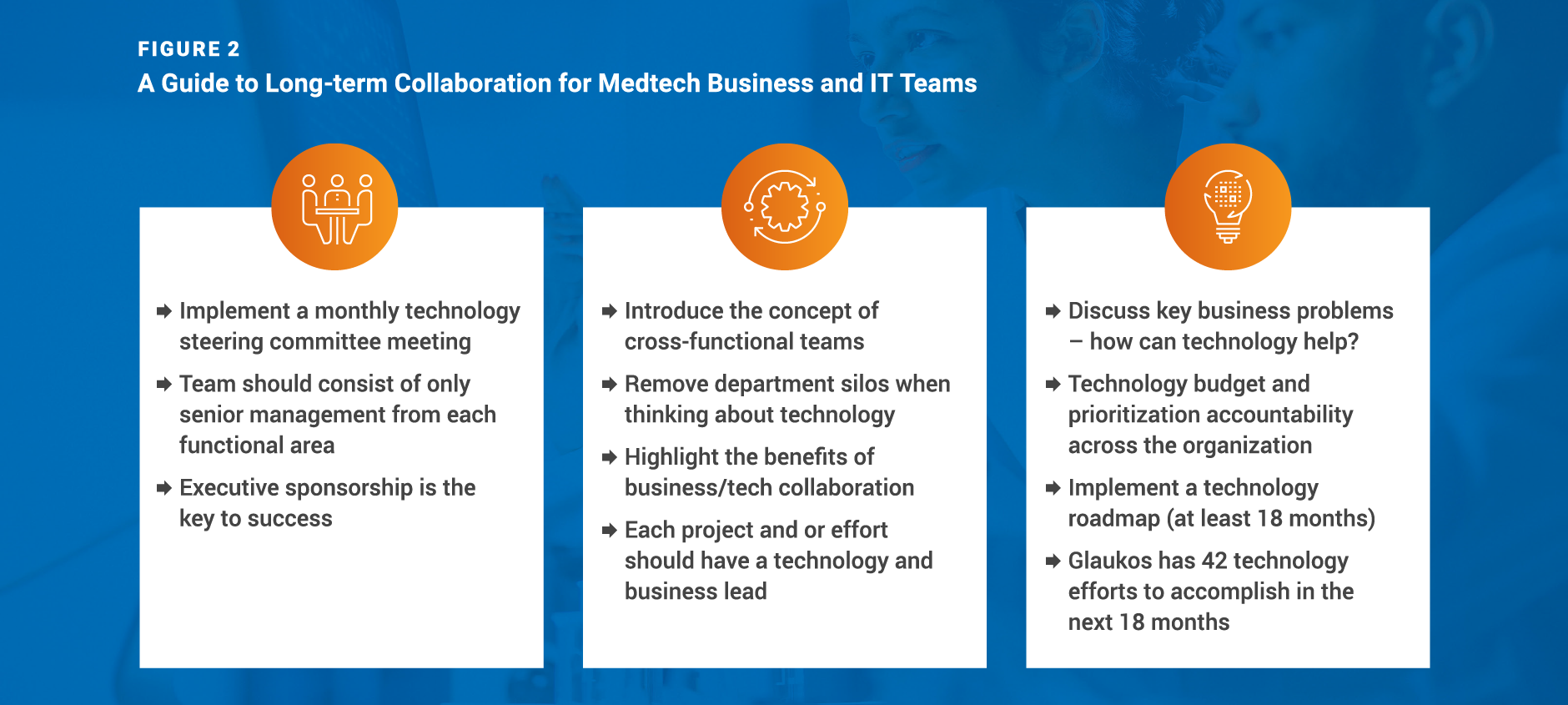Glaukos: Fueling Medtech Innovation by Bridging the Gap Between Business and IT
- Headquarters: San Clemente, CA, United States
- Founded: 1998
- Company size: 900+ employees
- Solutions: Veeva RIM, Veeva Quality, Veeva Clinical Operations, Veeva PromoMats
One of the best ways to drive competitive advantage in the medical device and diagnostics industry is to involve IT in business decisions. Yet, many medtech companies are structured in a way that prevents business and technology teams from working together effectively.
Dave Hohler, senior director of global technology solutions at top ophthalmic medical technology company Glaukos, says successfully implementing digital solutions to meet growing organizational needs starts with looking at IT as a key partner — not a commodity service. However, it takes effort to instill the right mindset. “Is your IT leadership business-focused or technology-focused?” he asks. “If they don’t understand what the business is trying to achieve, they’re only going to look at technology solutions for the sake of technology.”
Here’s how the Glaukos team successfully bridged the gap, engaging key stakeholders in both areas to gain momentum on its digital transformation objectives.
How to develop business acumen in IT
Technology and data inform every business decision, yet most medtech companies maintain departmental silos. The downsides of the separation range from an inability to make sense of evolving trends to falling short of customer expectations.
Getting business and IT teams to work better together is one of the most important shifts companies can make to compete effectively. The goal requires both parts of the business to adopt processes that nurture collaboration.
For Glaukos, it starts with smart hiring, extends to a sharp focus on the core competencies of technology leaders, and even touches on polishing IT’s image. [See FIGURE 1] The company:
- Hires for integrity, communication skills, and critical thinking abilities first, then technology background
- Invests in tech leaders’ education to ensure they understand the business and are aligned with goals
- Puts them in position to earn senior management’s’ confidence as business-minded individuals
For a cascade effect that will help drive success deeper in your organization, you can coach technology leaders to mentor their teams about business objectives. But, Hohler adds, “If you don’t bring IT leaders to the table, they’re not going to be successful.”
Once senior managers are confident the right leaders are in place, it becomes easier to advocate for a technology representative in every functional area. Glaukos puts this idea into action through quarterly technology reviews with functional departments. The representatives discuss each project’s status, ongoing strategy, new technology developments, business constraints, and how technology could assist.

Best practices for driving collaboration
Effective cross-departmental collaboration requires doing many ‘big’ things well, such as building trust and removing departmental gaps. However Hohler points out that some hurdles – like equipping IT leaders with deep knowledge of medtech business problems, goals, and opportunities — are more nuanced. By involving IT in the business case process, Glaukos can better articulate how new technology solutions create financial value, introduce strategic capabilities, and drive competitive advantage. This is especially true when it comes to longer term planning and platform strategy.
According to Hohler, “For every one of the 42 approved technology projects on Glaukos’ roadmap today, we have detailed project plans so teams hold themselves accountable for delivery. Those plans roll up into a report the CFO sees. Our executives have trust in us because we communicate exactly what we’re doing.”
As medtech companies sharpen their focus on customers, they may also face rapidly shifting priorities. During pivots, business leaders may move forward quickly without consulting others. But, Hohler cautions against this approach. “It’s so important for projects to have a steering committee working with the senior management team. Communication is essential amid constantly occurring shifts due to customer assessments or impacts.”
Glaukos’ guide to strengthening the partnership between business and technology teams includes securing executive sponsorship, broadly introducing the concept of cross-functional teams, and ongoing communication about the benefits of business and technology collaboration. [See FIGURE 2]

When cross-functional medtech teams align on business goals, budget, and the overall technology roadmap, the business is set up for success. It starts with a thorough understanding of how to garner support across business and IT for any initiative, so the focus remains on delivering innovative devices and diagnostics to the patient.
To learn more about Glaukos’ approach to bridging the gap between business and IT, watch their full Veeva MedTech Summit session recording on Veeva Connect.